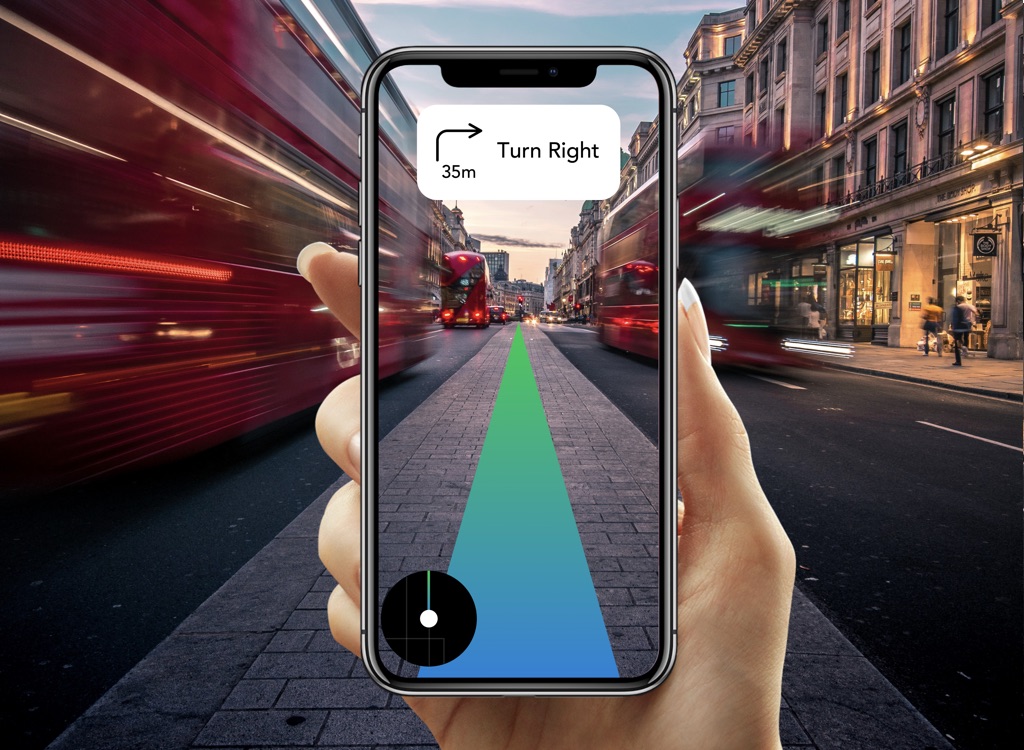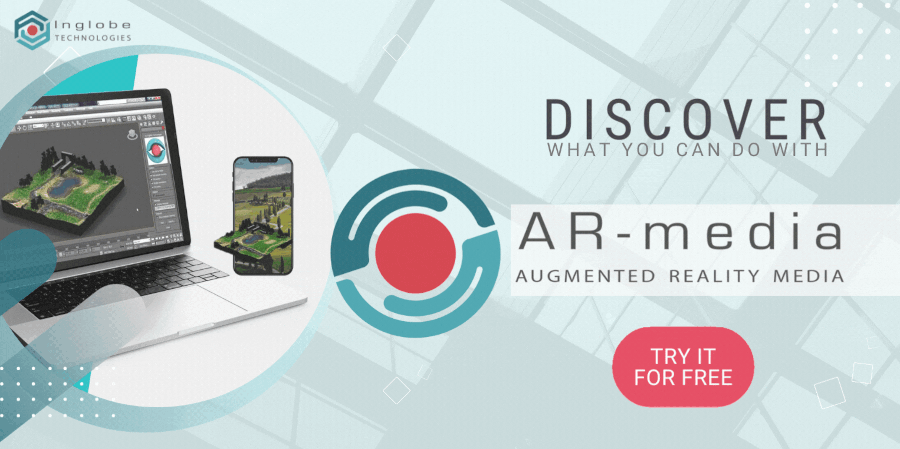If you are among those who’s asking how far WebAR has come in the development of experiences, like we are, and want to know more about its r-evolution, then you’ve landed in the right place (plus, we have a demo for you at the end of the page).
What is web ar?
“Augmented Reality is the enrichment of the perception of the context around us with digital data, created by technologies that allow the overlay of contents seen as part of the environment in which the subject finds itself”. In order to make this concept true, we usually need to download a specific app on our device and see the magic happen. WebAR breaks off from the tied-in-a-app definition, bringing Augmented Reality on the internet browser, freeing developers from the management of the apps and stores and allowing users to have access more easily and more rapidly to immersive experiences.
The r-evolution of WebAR happens exactly when the virtual object needs to be put into the environment: no special software or app is needed, only a smartphone or tablet and its camera, and an internet connection of course. Indeed, in order to have a positive result, the camera of the device plays the most important role. The information about the environment is detected by the phone camera, and through it the environment is scanned and analyzed and data is transferred from the camera to the Web environment.

The features of Web AR basically remain the same as application-based ones:
- Image tracking: by scanning a specific 2D image with the camera of your device (such as flyers, pictures, artworks and books), the Augmented Reality object will appear in your device (whether can be a video, a 3D model, another picture, an animation..), allowing you to live a deeper experience of that 2D image and giving you a more complete and more sensorial involvement;
- Marker tracking: basically the same as the image tracking but the scanning process takes place with a specific object or defined symbols, rather than 2D images;
- Location based AR: for instance virtual tours and maps support. Users, while moving freely in the environment, can have access to adding info about the place where they are, receiving help in finding certain places or knowing more about a specific monument or city.
It is necessary to remember, though, that even though Web AR does not require special apps, sometimes it might require specific adjustments in terms of softwares and tools in the devices, such as ARkit for iOS and ARCore for Android. Generally, WebAR nowadays is available for all the latest smartphone devices above iOS 11. Ergo, Web AR might still have some weaknesses that need to be improved and/or revised, and the battle between Web AR and app AR is still far from declaring a winner. Let’s see more specifically what are the main differences between them and what are their hardest limitations.

Web AR VS App-based AR: differences and limits
Why WebAR is the r-evolution we were all waiting for
- Well, as mentioned above, the first and most relevant difference between Application-based AR and Web AR is the “place” where they are released: application-based AR is only available using an app whether Web AR is accessible online without downloading other apps. The web aspect makes the whole access process way easier since you only need a URL link, a QR code or an NFC tag in order to live the experience.
- There are many advantages especially for developers. In fact, WebAR is able to significantly reduce time and cost of an app-based experience. First of all you don’t need app store providers’ validation, hence the market process is a lot quicker; you can give support and fix bugs immediately; you can release all the updates that you want potentially in no time.
- Why Web AR seems to become a revolution is for a simple, yet crucial reason: people like immediacy. Researchers have shown that when people need to download in order to use an experience, 50% of them are more keen to drop off and refuse to try the experience than to “waste” time on downloading an app that they will probably use just once. Hence the immediacy of the Web AR is undoubtedly its biggest asset.
Immediacy, easiness and ready-to-usability are central aspects in the innovation of Web AR that cannot be undervalued from agencies and companies whose aim is to compel the client through new innovative ways. For agencies, Web AR might definitely represent a new level of marketing and appeal to new followers and clients, giving to the users a brand new type of client experience.

But there are still weaknesses in the development of the experiences
- Being WebAR browser-based, it might happen to go towards a low performance. In terms of information transferring, WebAR spends more time and memory to transfer the digital object because of its lack of the resources that otherwise are present in the app-based and this can mean a lower quality of the digital object both in terms of image and animation. In order to live a better experience, the best solution would be the creation of “simpler” experiences, with less interactions
- Having good internet connection is the number one requirement in order not to occur in low-quality experiences or impossible-to-see experiences, that is why Wi-fi is preferable. App based AR can give you the ability to download the experiences in advance and use them at any time, even in the absence of an internet connection.
- Another restriction of the WebAR is the limited battery capability. Using applications, indeed, smartphones and other devices usually last longer because the app uses the functionalities already present in the device, whereas, in Web AR, browsers need access to the camera sensors, analysis and other resources and this can significantly reduce the last of the battery.

However, predictions about the future of the Web AR are more than positive that is why we talk about a r-evolution. Just think about three or four years ago and how long AR and Web AR have gone up to now. Of course there are features to optimize, tools to fix and aspects to refine, but as for other technologies that have been changing and improving with time, there is no doubt that the development of the Web AR and its experiences will follow the same destiny.
Anyway, we know you can’t wait to try our Web AR. So if you want to have a taste, wait no longer and try it now by scanning the QR code or by clicking below.


